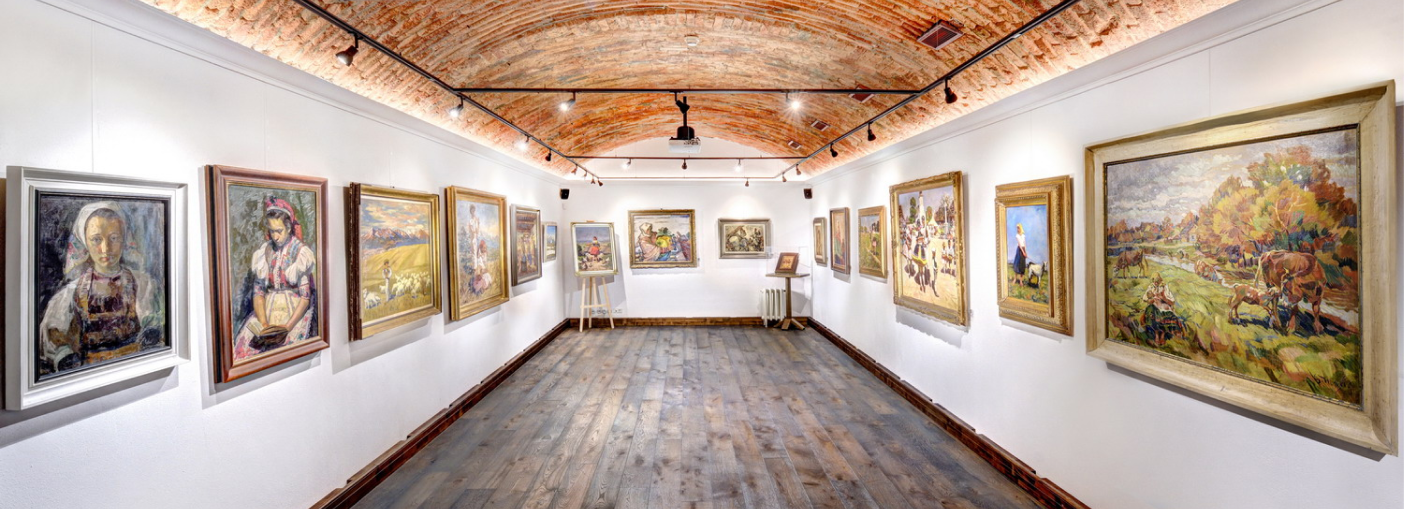
Ladislav Medňanský (also known as László Mednyánszky) was also nicknamed Red Baron (because of his revolutionary opinions) and was widely respected as a painter of bleak moods and scenes, melancholy, fateful passion and human isolation. He was born in 1852 in Beckov near Trenčín and died in 1919 in Vienna. According to his personal wish, he is buried at the Kerepes cemetery in Budapest, next to his friend and lover Bálint. After 1863 he was taught privately in his family manor in Strážky by the Austrian painter T. Ender, who was later sending him plaster models and other working aids. In 1872 – 1874, Medňanský studied at the Academy of Fine Arts in Munich (professors A. Strähuber and O. Seitz), and between 1874 and 1875 at École des Beaux-Arts in Paris (professor I. Pils). In 1875, he visited Barbizon for the first time and travelled repeatedly to Italy for studying purposes (1878), followed by repeated visits of Barbizon and France (1889 – 1892, 1896 – 1897). His painting was also influenced by the longer stay in the Hungarian town of Szolnok. He was regularly renting an atelier in Budapest and Vienna and had an atelier in Montmartre, Paris. Although he travelled incessantly, he regularly returned to paint into his native village of Beckov and the family manor in Strážky. For 18 years, the Spiš- and Upper-Hungarian painter Szepesi-Kuszka worked along Medňanský and painted under his influence. Stable exposition of Medňanský’s paintings was opened in 1990 in his family seat in Strážky (SNG). Today, Medňanský is highly priced among collectors – not only in Hungarian and Austrian cultural environment, but across the whole Europe. The key contribution of Medňanský is to be perceived predominantly in the implementation of the stimuli of the Barbizon landscaping school into the Upper-Hungarian painting context. As a strongly dedicated landscapist with a sense for mood (which reflects the visceral shifts of the human spirit and a search for the escape from the labyrinth of contradictory emotions of human passion), who demonstrated an extraordinary skilful work with light. Bleak atmosphere and nostalgia of desolate forests and landscapes corresponds well with the decadent moods of the fin-de-siecle, including the symbolism of the contemporary modern literature and philosophy. Another major contribution of Medňanský is his delicate reaction to the impressionist analysis of light in the natural exterior as well as interior. Only at the end of 19th century, pallet of Medňanský starts to brighten up and his execution contains also more expressive undertones. Along with most numerous landscapes, Medňanský also painted many portraits and figural compositions (from the Romani environment, people form social periphery and craftsmen) both in painting and drawing. During the cataclysm of the WWI in which he was personally involved in the Italian front, his figuration was imprinted with a fatal existential dimension. Bibliography: Vaculík, K.: Ladislav Medňanský – súborné dielo. Kat. výst. Bratislava, Slovak National gallery 1979; Aradi, N.: Mednyánszky. Budapest 1983; Glatz, A. C.: Ladislav Mednyánszky and Strážky. Kat. stálej expozície. Bratislava, Slovak National Gallery 1990; Zmetáková, D.: Ladislav Medňanský (Mednyánszky) – kresby. Kat. výst. Bratislava, Slovak National Gallery 1995.
